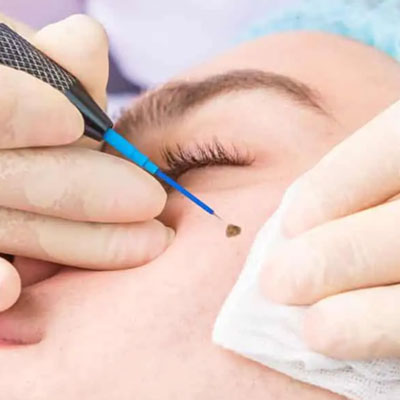
Contact Us
- 52A/28, CY Chintami Road, George Town, Near Bank of Baroda, Prayagraj, Uttar Pradesh. 211002
- drsethsclinic@gmail.com
- +91- 7390884499

- Warts also known as verrucae, are growth on the skin caused by the Human Papiloma Virus(HPV) affecting the top layer of skin cells.
- They typically appear rough and skin coloured, although they can also be flat, smooth and dark.
- Warts are contagious and can spread through direct contact with wart.
- They are frequently found on the hands, feet, face and genital area.
A. Common Warts - Typically appears on fingers and toes,less than 1cm in size.
B. Plantar Warts - Grows on soles of the feet and can develop beneath the skin surface.
C. Flat Warts - Commonly found on the face,hands,feet,legs and arms.
D. Filiform Warts - Typically found around mouth,nose and neck.
E. Periungal Warts - These warts grow around and under finger nails and toe nails,but they are quite painful and affecting nail growth.
F. Genital Warts
- Direct contact such as touching your own wart or someone else.
- Walking barefoot on moist surface.
- Sharing personal items like razors, shoes or socks with an individual who has wart.
- Varies based on factors like the type of wart.
- The primary reasons for seeking wart treatment include an increase in the number of warts, cosmetic concerns and pain.
- Various treatment options are available for warts ranging from home remedies to surgical interventions for wart removal.
- Mole or nevus is a growth on the skin formed by cluster of pigmented cells.
- Typically, they manifest as small spots with dark brown or tan coloring, often round or oval in shape.
- Moles can develop anywhere on the body and may alter in appearance over time.
1- Radio Frequency Abrasion
2- Punch Excision
3- Shave Excision
4- Laser Mole Removal
5- Surgical Excision
- Depending on the mole removal method, used area may be bandaged.
- Its important to keep the area clean and dry for 24-48 hrs.
- You need to schedule a follow up visit as directed by your doctor.
